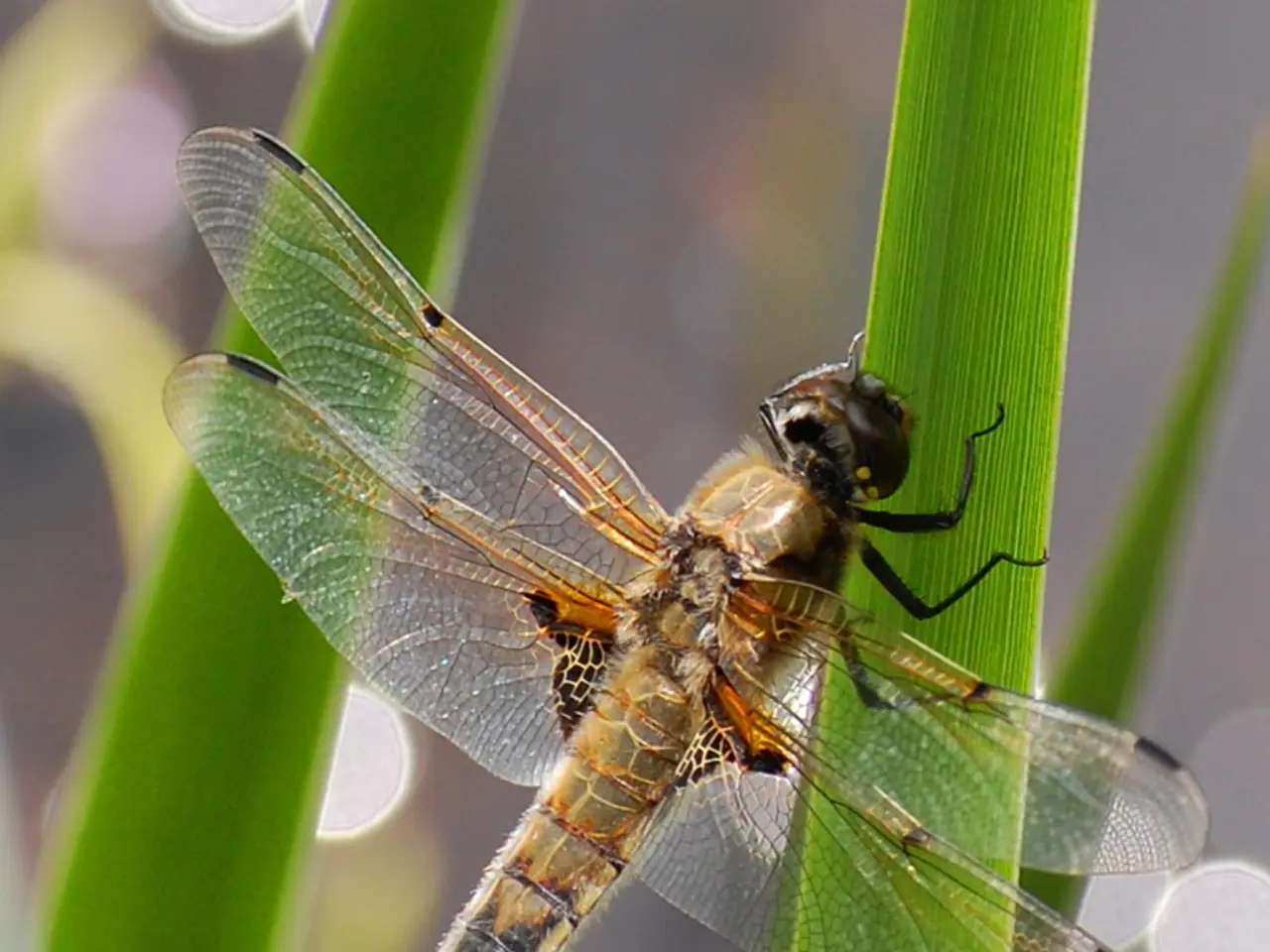Differences in Characteristics and Actions Between Locusts and Grasshoppers
Grasshoppers and locusts, both common inhabitants of fields and meadows, may appear similar at first glance, but they lead vastly different lives. While both are part of the same family, Crickets, they belong to distinct genera: Acrididae for grasshoppers and Schistocerca for locusts.
Grasshoppers are generally solitary creatures, spending their lives apart from others of their kind. This is in contrast to locusts, which can transition into a collective, migrating force under favourable conditions.
One of the most widespread grasshopper species is the Differential grasshopper (Melanoplus differentialis), found in fields and meadows around the world. Another common grasshopper is the Red-legged grasshopper (Melanoplus femurrubrum), a species native to North America. The Two-striped grasshopper (Melanoplus bivittatus) is also a well-known grasshopper, recognised by its distinctive striped pattern.
Grasshoppers are primarily herbivorous, feeding on grasses and leaves. They maintain more consistent coloration, often blending in seamlessly with their surroundings. However, when locusts shift into their swarming phase, they undergo dramatic changes. Their colouration can alter significantly, and they develop stronger wings suited for long-distance migration.
Female locusts and female grasshoppers lay eggs in soil. In favourable conditions, female locusts can lay multiple batches of eggs, leading to rapid population growth. This is one of the reasons locusts can suddenly appear in vast numbers, forming swarms that can stretch for miles.
Locusts exhibit physiological changes such as increased serotonin levels, triggering gregarious behaviour, and morphological changes like color and size differences, along with behavioural shifts from solitary to swarming. Grasshoppers, on the other hand, remain solitary, with stable physiology and behaviour.
It's important to note that grasshoppers play crucial roles as prey for birds, reptiles, and small mammals. Their presence in ecosystems helps maintain a balance, providing food for various species and contributing to the overall health of the environment.
In conclusion, while grasshoppers and locusts may seem similar, they lead distinct lives. Grasshoppers are solitary herbivores, blending into their surroundings, while locusts can transform into a collective, migrating force, changing colour and behaviour in the process. Understanding these differences can help us appreciate the intricacies of these fascinating creatures and the roles they play in our ecosystems.








